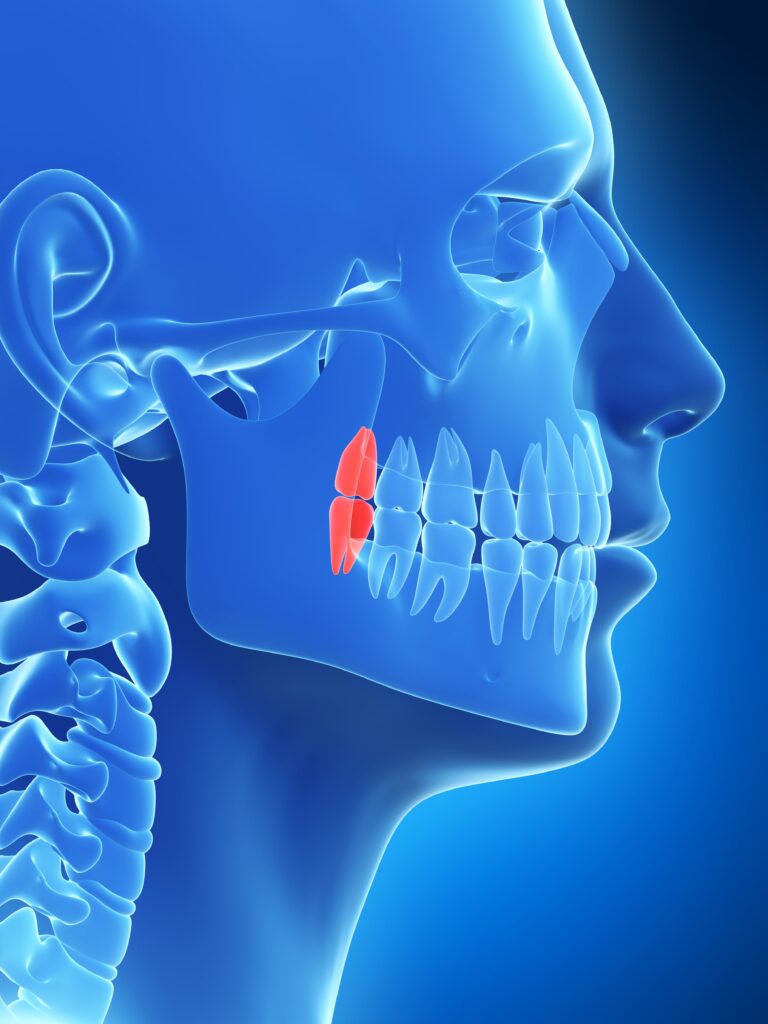Wisdom teeth are the last set of teeth to erupt in the mouth, and they can cause a lot of problems if they don’t come in properly. In this blog post, we will discuss everything you need to know about wisdom teeth eruption. We will define wisdom teeth, talk about when they normally erupt, and explain why they exist. We will also discuss the symptoms of wisdom tooth eruption and when you should see a dentist. Finally, we will explain the difference between a simple extraction and a surgical extraction, and when each is necessary.
What are Wisdom Teeth?

The first thing you need to know about wisdom teeth is that they are the last set of teeth to erupt in the mouth. They usually come in between the ages of 17 and 21, but they can come in earlier or later than that. They are called wisdom teeth since they erupt once you have become “wiser”.
Although wisdom teeth are no longer a biological necessity, they were once necessary for survival. Our ancestors used them to grind tough food, but now that we have softer diets and other methods of grinding food, the human jaw has evolved to be a smaller size. As a result, wisdom teeth don’t always fit into the mouth.
Impacted Wisdom Teeth
Wisdom teeth can cause a lot of problems if they don’t come in properly. If your wisdom teeth are impacted, it means that they are stuck in the gum and cannot erupt through the gum. Impacted wisdom teeth can cause pain, swelling, and infection in the gum. They can also crowd other teeth and damage them.
There are three different types of impactions, including:
- Soft tissue impaction: This is when the gum tissue covers the tooth.
- Partial bony impaction: This is when part of the tooth has erupted through the gum, but part of it is still covered by bone.
- Complete bony impaction: This is when the tooth is completely covered by bone and cannot erupt through the gum.
When to See a Dentist
If you are experiencing any of the following symptoms, you should see a dentist:
- Pain in the back of the mouth
- Swelling in the back of the mouth
- Bad breath
- Toothache
- Difficulty opening your mouth

If you think you may have an impacted wisdom tooth, it is important to see a dentist as soon as possible. They will be able to take x-rays and determine if your wisdom teeth are impacted and if they need to be removed.
Wisdom Teeth Extractions
Most wisdom teeth will need to be extracted, and there are two different types of extractions: simple and surgical. A simple extraction is when the dentist removes the tooth using forceps without having to cut into the gum. A surgical extraction is when the dentist has to make an incision in the gum to reach and remove the tooth. Most impacted wisdom teeth will need a surgical extraction, but your dentist will be able to determine which type of extraction is necessary for you.
In Conclusion
In this blog post, we have discussed everything you need to know about wisdom teeth eruption. We have defined wisdom teeth, talked about when they normally erupt, and explained why they exist. We have also discussed the symptoms of wisdom tooth eruption and when you should see a dentist. Finally, we have explained the difference between a simple extraction and a surgical extraction, and when each is necessary. If you are experiencing any pain or swelling in the back of your mouth, be sure to see a dentist as soon as possible. They will be able to take x-rays and determine if your wisdom teeth need to be extracted. Thank you for reading!

Dr. Admar holds dual certificates — a Bachelor of Dental Surgery (BDS) in 2010 from India and a Doctor of Dental Surgery (DDS) in 2014 from Canada. He is now a full time practicing dentist in Kamloops where he provides a variety of services, including emergency dentistry. Dr. Admar spends hundreds of hours in continued dental education to stay up to date in cosmetic and implant dentistry and he has achieved several advanced qualifications.


